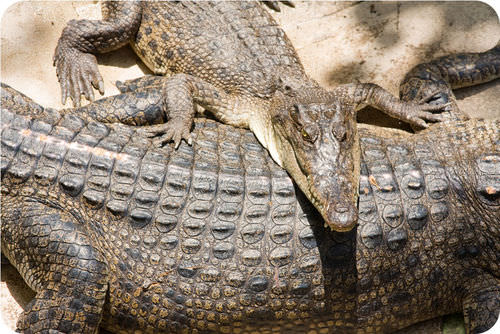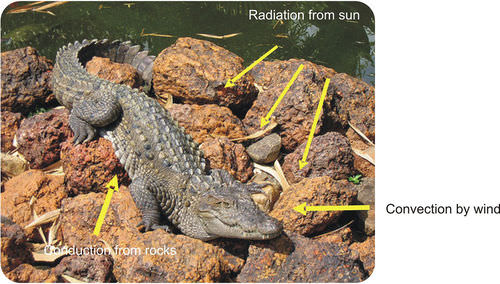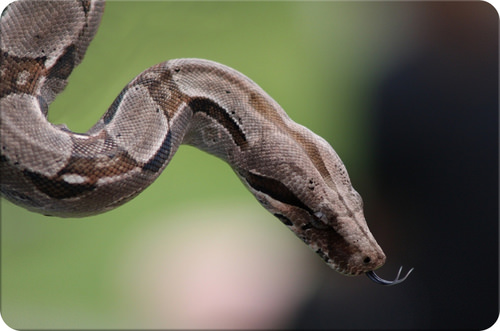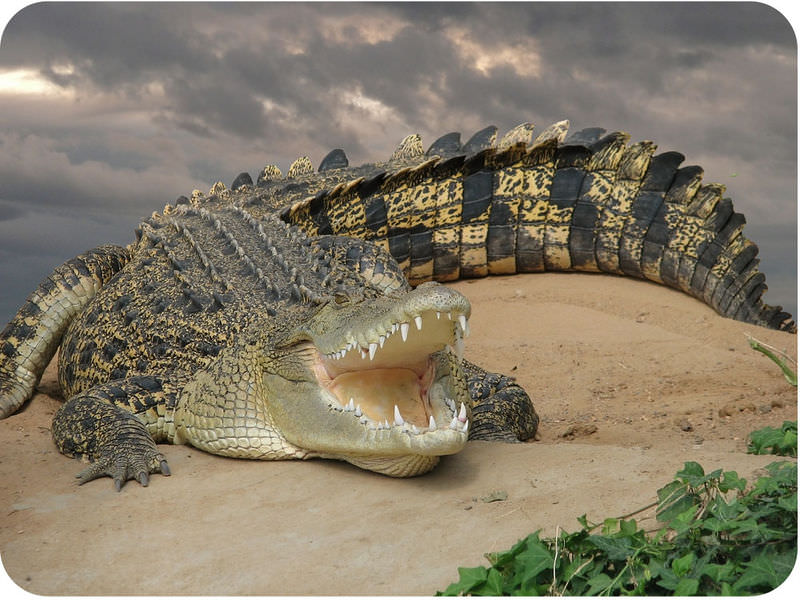12.5: Reptile Structure and Function
- Page ID
- 13242
\( \newcommand{\vecs}[1]{\overset { \scriptstyle \rightharpoonup} {\mathbf{#1}} } \)
\( \newcommand{\vecd}[1]{\overset{-\!-\!\rightharpoonup}{\vphantom{a}\smash {#1}}} \)
\( \newcommand{\dsum}{\displaystyle\sum\limits} \)
\( \newcommand{\dint}{\displaystyle\int\limits} \)
\( \newcommand{\dlim}{\displaystyle\lim\limits} \)
\( \newcommand{\id}{\mathrm{id}}\) \( \newcommand{\Span}{\mathrm{span}}\)
( \newcommand{\kernel}{\mathrm{null}\,}\) \( \newcommand{\range}{\mathrm{range}\,}\)
\( \newcommand{\RealPart}{\mathrm{Re}}\) \( \newcommand{\ImaginaryPart}{\mathrm{Im}}\)
\( \newcommand{\Argument}{\mathrm{Arg}}\) \( \newcommand{\norm}[1]{\| #1 \|}\)
\( \newcommand{\inner}[2]{\langle #1, #2 \rangle}\)
\( \newcommand{\Span}{\mathrm{span}}\)
\( \newcommand{\id}{\mathrm{id}}\)
\( \newcommand{\Span}{\mathrm{span}}\)
\( \newcommand{\kernel}{\mathrm{null}\,}\)
\( \newcommand{\range}{\mathrm{range}\,}\)
\( \newcommand{\RealPart}{\mathrm{Re}}\)
\( \newcommand{\ImaginaryPart}{\mathrm{Im}}\)
\( \newcommand{\Argument}{\mathrm{Arg}}\)
\( \newcommand{\norm}[1]{\| #1 \|}\)
\( \newcommand{\inner}[2]{\langle #1, #2 \rangle}\)
\( \newcommand{\Span}{\mathrm{span}}\) \( \newcommand{\AA}{\unicode[.8,0]{x212B}}\)
\( \newcommand{\vectorA}[1]{\vec{#1}} % arrow\)
\( \newcommand{\vectorAt}[1]{\vec{\text{#1}}} % arrow\)
\( \newcommand{\vectorB}[1]{\overset { \scriptstyle \rightharpoonup} {\mathbf{#1}} } \)
\( \newcommand{\vectorC}[1]{\textbf{#1}} \)
\( \newcommand{\vectorD}[1]{\overrightarrow{#1}} \)
\( \newcommand{\vectorDt}[1]{\overrightarrow{\text{#1}}} \)
\( \newcommand{\vectE}[1]{\overset{-\!-\!\rightharpoonup}{\vphantom{a}\smash{\mathbf {#1}}}} \)
\( \newcommand{\vecs}[1]{\overset { \scriptstyle \rightharpoonup} {\mathbf{#1}} } \)
\( \newcommand{\vecd}[1]{\overset{-\!-\!\rightharpoonup}{\vphantom{a}\smash {#1}}} \)
\(\newcommand{\avec}{\mathbf a}\) \(\newcommand{\bvec}{\mathbf b}\) \(\newcommand{\cvec}{\mathbf c}\) \(\newcommand{\dvec}{\mathbf d}\) \(\newcommand{\dtil}{\widetilde{\mathbf d}}\) \(\newcommand{\evec}{\mathbf e}\) \(\newcommand{\fvec}{\mathbf f}\) \(\newcommand{\nvec}{\mathbf n}\) \(\newcommand{\pvec}{\mathbf p}\) \(\newcommand{\qvec}{\mathbf q}\) \(\newcommand{\svec}{\mathbf s}\) \(\newcommand{\tvec}{\mathbf t}\) \(\newcommand{\uvec}{\mathbf u}\) \(\newcommand{\vvec}{\mathbf v}\) \(\newcommand{\wvec}{\mathbf w}\) \(\newcommand{\xvec}{\mathbf x}\) \(\newcommand{\yvec}{\mathbf y}\) \(\newcommand{\zvec}{\mathbf z}\) \(\newcommand{\rvec}{\mathbf r}\) \(\newcommand{\mvec}{\mathbf m}\) \(\newcommand{\zerovec}{\mathbf 0}\) \(\newcommand{\onevec}{\mathbf 1}\) \(\newcommand{\real}{\mathbb R}\) \(\newcommand{\twovec}[2]{\left[\begin{array}{r}#1 \\ #2 \end{array}\right]}\) \(\newcommand{\ctwovec}[2]{\left[\begin{array}{c}#1 \\ #2 \end{array}\right]}\) \(\newcommand{\threevec}[3]{\left[\begin{array}{r}#1 \\ #2 \\ #3 \end{array}\right]}\) \(\newcommand{\cthreevec}[3]{\left[\begin{array}{c}#1 \\ #2 \\ #3 \end{array}\right]}\) \(\newcommand{\fourvec}[4]{\left[\begin{array}{r}#1 \\ #2 \\ #3 \\ #4 \end{array}\right]}\) \(\newcommand{\cfourvec}[4]{\left[\begin{array}{c}#1 \\ #2 \\ #3 \\ #4 \end{array}\right]}\) \(\newcommand{\fivevec}[5]{\left[\begin{array}{r}#1 \\ #2 \\ #3 \\ #4 \\ #5 \\ \end{array}\right]}\) \(\newcommand{\cfivevec}[5]{\left[\begin{array}{c}#1 \\ #2 \\ #3 \\ #4 \\ #5 \\ \end{array}\right]}\) \(\newcommand{\mattwo}[4]{\left[\begin{array}{rr}#1 \amp #2 \\ #3 \amp #4 \\ \end{array}\right]}\) \(\newcommand{\laspan}[1]{\text{Span}\{#1\}}\) \(\newcommand{\bcal}{\cal B}\) \(\newcommand{\ccal}{\cal C}\) \(\newcommand{\scal}{\cal S}\) \(\newcommand{\wcal}{\cal W}\) \(\newcommand{\ecal}{\cal E}\) \(\newcommand{\coords}[2]{\left\{#1\right\}_{#2}}\) \(\newcommand{\gray}[1]{\color{gray}{#1}}\) \(\newcommand{\lgray}[1]{\color{lightgray}{#1}}\) \(\newcommand{\rank}{\operatorname{rank}}\) \(\newcommand{\row}{\text{Row}}\) \(\newcommand{\col}{\text{Col}}\) \(\renewcommand{\row}{\text{Row}}\) \(\newcommand{\nul}{\text{Nul}}\) \(\newcommand{\var}{\text{Var}}\) \(\newcommand{\corr}{\text{corr}}\) \(\newcommand{\len}[1]{\left|#1\right|}\) \(\newcommand{\bbar}{\overline{\bvec}}\) \(\newcommand{\bhat}{\widehat{\bvec}}\) \(\newcommand{\bperp}{\bvec^\perp}\) \(\newcommand{\xhat}{\widehat{\xvec}}\) \(\newcommand{\vhat}{\widehat{\vvec}}\) \(\newcommand{\uhat}{\widehat{\uvec}}\) \(\newcommand{\what}{\widehat{\wvec}}\) \(\newcommand{\Sighat}{\widehat{\Sigma}}\) \(\newcommand{\lt}{<}\) \(\newcommand{\gt}{>}\) \(\newcommand{\amp}{&}\) \(\definecolor{fillinmathshade}{gray}{0.9}\)
Why did amphibians evolve into reptiles?
It probably has to do with food and land. Having to live close to water limits the resources available to a species. Having the ability to live away from water allowed reptiles to search for additional food.
Structure and Function in Reptiles
Reptiles are a class of tetrapod vertebrates that produce amniotic eggs. They include crocodiles, alligators, lizards, snakes, and turtles. The reptile class is one of the largest classes of vertebrates. It consists of all amniotes except birds and mammals. Reptiles have several adaptations for living on dry land that amphibians lack. For example, as shown in Figure below, the skin of most reptiles is covered with scales. The scales, which are made of very tough keratin, protect reptiles from injury and prevent them from losing water.
 Crocodile Scales. These crocodiles are covered with tough, waterproof scales.
Crocodile Scales. These crocodiles are covered with tough, waterproof scales.Reptile Respiration
The scales of reptiles prevent them from absorbing oxygen through their skin, as amphibians can. Instead, reptiles breathe air only through their lungs. However, their lungs are more efficient than the lungs of amphibians, with more surface area for gas exchange. This is another important reptile adaptation for life on land.
Reptiles have various ways of moving air into and out of their lungs. Lizards and snakes use muscles of the chest wall for this purpose. These are the same muscles used for running, so lizards have to hold their breath when they run. Crocodiles and alligators have a large sheet of muscle below the lungs, called a diaphragm, that controls their breathing. This is a structure that is also found in mammals.
Ectothermy in Reptiles
Like amphibians, reptiles are ectotherms with a slow metabolic rate. Their metabolism doesn’t generate enough energy to keep their body temperature stable. Instead, reptiles regulate their body temperature through their behavior. For example, the crocodile in Figure below is soaking up heat from the environment by basking in the sun. Because of their ectothermy, reptiles can get by with as little as one tenth the food needed by endotherms such as mammals. Some species of reptiles can go several weeks between meals.
 Heat Transfer to an Ectothermic Reptile. This crocodile is being warmed by the environment in three ways. Heat is radiating directly from the sun to the animal’s back. Heat is also being conducted to the animal from the rocks it rests on. In addition, convection currents are carrying warm air from surrounding rocks to the animal’s body.
Heat Transfer to an Ectothermic Reptile. This crocodile is being warmed by the environment in three ways. Heat is radiating directly from the sun to the animal’s back. Heat is also being conducted to the animal from the rocks it rests on. In addition, convection currents are carrying warm air from surrounding rocks to the animal’s body.Other Reptile Structures
Like amphibians, most reptiles have a heart with three chambers, although crocodiles and alligators have a four-chambered heart like birds and mammals. The reptile brain is also similar in size to the amphibian brain, taking into account overall body size. However, the parts of the reptile brain that control the senses and learned behavior are larger than in amphibians.
Most reptiles have good eyesight and a keen sense of smell. Snakes smell scents in the air using their forked tongue (see Figure below). This helps them locate prey. Some snakes have heat-sensing organs on their head that help them find endothermic prey, such as small mammals and birds.
 Snake “Smelling” the Air. A snake flicks its tongue in and out to capture scent molecules in the air.
Snake “Smelling” the Air. A snake flicks its tongue in and out to capture scent molecules in the air.Summary
- Reptiles are a class of ectothermic, tetrapod vertebrates.
- Reptiles have several adaptations for living on dry land, such as tough keratin scales and efficient lungs for breathing air.
- Reptiles have a three-chambered heart and relatively well-developed brain.
Review
- Describe reptile scales and the functions they serve.
- What is a diaphragm? What does it do?
- Describe two senses that snakes may use to locate prey.
- Pretend you are a reptile such as a lizard. Explain how you might stay warm on a cold day.





